Summary
This project aims to investigate practical methods of adapting forest regeneration to increase resilience to climate change and biotic threats, whilst maintaining productivity.
Research objectives
There are 3 main research areas within the project:
- Seed and seedling biology (including the regeneration of emerging / alternative species)
- Integrated forest vegetation management and the sustainable use of pesticides
- Establishment systems
Further general information and related services on regeneration and sustainable silviculture can be found on our resources and guidance pages
Status
The research programme is ongoing and is reviewed at regular intervals.
Contact
Funders and partners
This research is funded by the Forestry Commission Regeneration and sustainable silviculture programme.
Other funders include Forest Enterprise England, Forest Enterprise Scotland, Forestry Commission Scotland, Natural Resources Wales, Defra, Royal Botanic Gardens Kew.
Forestry Commission policy
Successful regeneration is fundamental for sustainable woodland management in the UK. Regeneration is therefore an essential prerequisite for a wide range of Forestry Commission policy objectives, and this programme provides a vital source of scientifically backed expertise in this area. New challenges for the practice of regeneration are posed in particular by climate change and the emergence of new pests and diseases, but also by increasing interest in alternative species; continuous cover forestry; natural regeneration; restoration; woodland expansion; and by changes to policy, legislation and certification.
To reflect these challenges the key objective for this research programme is – adapting forest regeneration to increase resilience to climate change and biotic threats, whilst maintaining productivity.
Chemicals Regulation Directorate (CRD) officially recognised efficacy testing organisation
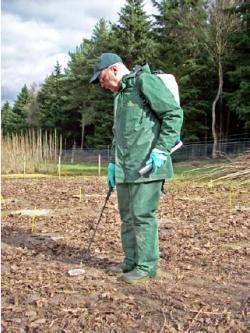 As a Chemicals Regulation Directorate (CRD) ‘Officially Recognised’ efficacy testing organisation, Forest Research is able to carry out Quality Assured field trials of new and existing pesticides under strictly controlled environmental conditions, following the requirements of Good Experimental Practice (GEP).
As a Chemicals Regulation Directorate (CRD) ‘Officially Recognised’ efficacy testing organisation, Forest Research is able to carry out Quality Assured field trials of new and existing pesticides under strictly controlled environmental conditions, following the requirements of Good Experimental Practice (GEP).
Our research nursery at Headley provides controlled conditions with over 6 ha of flat free-draining soil with full irrigation, flexible power supplies and deer and rabbit fencing, while our Technical Services Unit staff are highly skilled with many years experience of managing complex efficacy trials in a wide variety of forest locations throughout the country.
To find out more about services and facilities or to enquire about setting up a trial, please contact:
Forestry Commission publications on vegetation management
Vegetation management
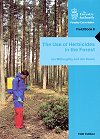 The Use of Herbicides in the Forest
The Use of Herbicides in the Forest
Provides detailed, comprehensive, practical guidance on all aspect of herbicide use in British forestry. In conjunction with product labels, this provides the primary source of advice for practitioners contemplating herbicide use within forests.
By Ian Willoughby and Jim Dewar.
Forestry Commission Field Book 8.
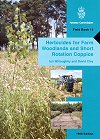 Herbicides for Farm Woodlands and Short Rotation Coppice
Herbicides for Farm Woodlands and Short Rotation Coppice
Extends the advice for woodland creation situations, where weed growth can be particularly problematic.
By Ian Willoughby and David Clay.
Forestry Commission Field Book 14.
Herbicides for farm woodlands and short rotation coppice – main sections (PDF-3843 KB)
Herbicides for farm woodlands and short rotation coppice – appendices (PDF-3175 KB)
Please note that these PDF files form an integral whole, and should always be downloaded and read in conjunction with each other.
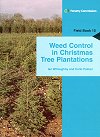 Weed Control in Christmas Tree Plantations
Weed Control in Christmas Tree Plantations
Gives detailed recommendations for herbicide programmes in horticultural Christmas tree production.
By Ian Willoughby and Colin Palmer.
Forestry Commission Field Book 15.
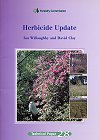 Herbicide Update
Herbicide Update
Updates the information in Forestry Commission Field Book 8 and complements the specialist information published in Field Book 14 and Field Book 15. Explains relevant changes in legislation and approved products.
By Ian Willoughby and David Clay.
Forestry Commission Technical Paper 28.
 Establishing Farm Woodlands
Establishing Farm Woodlands
Summarises the silvicultural principles behind new woodland creation on fertile, lowland sites.
By David Williamson.
Forestry Commission Handbook 8.
 Trees and Weeds: Weed Control for Successful Tree Establishment
Trees and Weeds: Weed Control for Successful Tree Establishment
A detailed examination of the different ways in which weeds affect young trees.
By Richard Davies.
Forestry Commission Handbook 2.
Out of print – please contact our Research Information Service if you wish to see a copy of this publication.
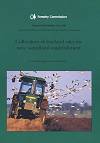 Cultivation of Lowland Sites for New Woodland Establishment (PDF-2346 KB)
Cultivation of Lowland Sites for New Woodland Establishment (PDF-2346 KB)
By Ian Willoughby and Andy Moffat.
Forestry Commission Research Information Note 288
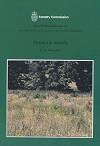 Noxious Weeds (PDF-2718 KB)
Noxious Weeds (PDF-2718 KB)
By Ian Willoughby.
Forestry Commission Research Information Note 274
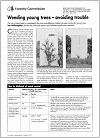 Weeding Young Trees – Avoiding Trouble (PDF-1091 KB)
Weeding Young Trees – Avoiding Trouble (PDF-1091 KB)
By Ian Willoughby.
Integrated Pest Management and pesticide reduction
Interim Guidance on management of Hylobius abietis (2017) (PDF-1004 KB). This new Note provides the latest guidance on the integrated pest management of the insect Hylobius abietis. In doing so it draws on some of the key findings after 7 years of an ongoing programme of collaborative forest industry research on alternatives to the use of the insecticide cypermethrin for protecting trees from Hylobius damage. In addition, as a separate Appendix, it summarises knowledge and guidance on the safe use of the insecticide acetamiprid, which is increasingly being phased in across the UK forest industry as an alternative to cypermethrin.
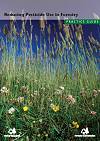 Reducing Pesticide Use in Forestry
Reducing Pesticide Use in Forestry
Covering pest, disease, vegetation and wildlife management, and based on the latest research, this publication guides managers in assessing the impact of any problem and selecting a non-chemical solution. If pesticide use is unavoidable, it should help managers keep chemical use to the minimum level necessary consistent with good practice, while at the same time reducing risk of damage to the environment.
This guide forms an important companion to Forestry Commission Field Book 8 – The Use of Herbicides in the Forest, and should be essential reading for any manager entering into UK Woodland Assurance Standard (UKWAS) certification.
By Ian Willoughby.
Forestry Commission Practice Guide 15.
 Using dye markers to reduce pesticide use
Using dye markers to reduce pesticide use
By Ian Willoughby.
Forestry Commission Technical Note 16.
Direct seeding
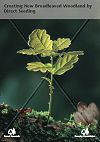 Creating New Broadleaved Woodland by Direct Seeding
Creating New Broadleaved Woodland by Direct Seeding
Provides detailed practical recommendations on the silviculture of creating new woodlands by direct sowing.
By Ian Willoughby, Richard Jinks, Peter Gosling and Gary Kerr.
Forestry Commission Practice Guide 16.
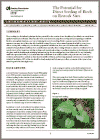 The Potential for Direct Seeding of Birch on Restock Sites
The Potential for Direct Seeding of Birch on Restock Sites
Guidance on the current potential for using direct seeding to establish upland birch woodland on upland restock sites.
By Ian Willoughby, Alan Harrison, Richard Jinks, Peter Gosling, Ralph Harmer and Gary Kerr.
Forestry Commission Information Note 84.
What’s of interest
Forest Research Technical Development
Full publications list, including details of the peer reviewed scientific papers underpinning the practical user guidance outlined on this page
Useful sites
Scientific publications on vegetation management
Scientific publications and accessible trade journal articles on vegetation management and the use of pesticides, and Integrated Pest Management and pesticide reduction
2018
Willoughby, I.H., Tubby, K.V., Saunders, C. and Peace, S. (In press). Exploring the use of Ecoplugs for woody weed control. Quarterly Journal of Forestry, in press.
Willoughby, I.H. and Peace, S. (2018). Reversing the spread: how can we prevent gaultheria becoming the next rhododendron? Quarterly Journal of Forestry, 113 (3), 199-202.
Willoughby, I.H., Harmer, R. and Forster, J. (2018). Ten conifer species with the potential for wider use in British forestry show some tolerance to six commonly used pesticides. Quarterly Journal of Forestry 112 (2), 84-91.
2017
Willoughby, I.H., Stokes, V.J. and Edwards, C. (2017). Ecoplugs containing glyphosate can be effective in preventing regrowth from Rhododendron ponticum stumps. Scottish Forestry 71 (3), 33-39.
Willoughby, I.H., Stokes, V.J. and Connolly, T. (2017). Using Ecoplugs containing glyphosate can be an effective method of killing standing trees. Forestry 90 (5), 719 – 727.
Tubby, K.V., Willoughby, I.H. and Forster, J. (2017). The efficacy of chemical thinning treatments on Pinus sylvestris and Larix kaempferi and subsequent incidence and potential impact of Heterobasidion annosum infection in standing trees. Forestry 90 (5), 728 – 736.
2015
Willoughby, I.H., Seier, M.K., Stokes, V.J., Thomas, S.E., Varia, S. (2015). Synthetic herbicides were more effective than a bioherbicide based on Chondrostereum purpureum in reducing resprouting of Rhododendron ponticum, a host of Phytophthora ramorum in the UK Forestry 88 (3), 336-344.
Willoughby, I.H. and Stokes, V.J. (2015). Mixture B New Formulation adjuvant increases the rainfastness and hence effectiveness of glyphosate for rhododendron control. Forestry 88 (2), 172-179.
2014
Stokes, V.J. and Willoughby, I.H. (2014). Early weed control can increase long-term growth, yield and carbon sequestration of Sitka spruce stands in Britain. Forestry 87, 425-435.
2013
Willoughby, I.H., Ralph Harmer, R., Morgan, G.W., Peace, A. (2013). Triclopyr applied in the winter dormant season can give effective control of bramble (Rubus fruticosus L. agg.) without damaging young tree seedlings or other non-target vegetation.(PDF-1520 KB). DOI: 10.1093/forestry/cps053. Forestry (86): 59-69.
2012
Stokes, V. (2012). Some biodegradable mulch materials provide effective weed control during establishment of ash (Fraxinus excelsior) on farm woodland sites. Quarterly Journal of Forestry, 106 (4): 257-268.
2011
Willoughby, I.H., Jinks, R.L., Morgan, G.W., Pepper, H., Budd, J. and Mayle, B. (2011). The use of repellents to reduce predation of tree seed by wood mice (Apodemus sylvaticus L.) and grey squirrels (Sciurus carolinensis Gmelin). European Journal of Forest Research, 130, 601-611.
McCarthy, N., Bentsen, N.S., Willoughby, I. and Balandier, P. (2011). The state of forest vegetation management in Europe in the 21st century. European Journal of Forest Research 130, 7-16.
Stokes, V.J. and Willoughby, I. (2011). The impact of bracken control on establishment of Corsican pine (Pinus nigra sub sp. laricio (Maire)) and pine weevil (Hylobius abietis (L.)) damage. In: Vegetation 2011, management [held at] Sheffield Hallam University, Sheffield, 27-28 April 2011, T Sparks, C Britt, A Cherrill, R Marrs, S Mortimer, R Pywell, I Rotherham, V J Stokes and D Westbury, eds. Aspects of Applied Biology 108. Association of Applied Biologists, Wellesbourne, Warwick. 217-224.
Stokes, V. and Willoughby, I. (2011). A comparison of cover crops, direct seeding and herbicides in the establishment of ash trees (Fraxinus excelsior (L.) in lowland Britain. Quarterly Journal of Forestry, 105 (1): 19-27.
2009
Willoughby, I., Stokes, V. and Kerr, G. (2009). Side shelter on lowland sites can benefit early growth of ash (Fraxinus excelsior L.) and sycamore (Acer pseudoplatanus L.). Forestry 82 (2), 199-210.
Willoughby, I., Wilcken, C., Ivey, P., O’Grady, K., and Katto, F. (2009). Forest Stewardship Council guide to integrated pest, disease and weed management in FSC certified forests and plantations. FSC Technical Series No. 2009-001.
Willoughby, I. and Jinks, R.L. (2009). The effect of duration of vegetation management on broadleaved woodland creation by direct seeding (PDF-277 KB). Forestry 82 (3), 343-359.
Willoughby, I., Balandier, P., Bentsen, N.S., McCarthy, N. and Claridge, J. (Eds.) (2009). Forest vegetation management in Europe: current practice and future requirements (PDF-3839 KB). COST Office, Brussels. 156 pp.
2007
Willoughby, I., Stokes, V., Poole, J., White, J.E.J. and Hodge, S.J. (2007). The potential of 44 native and non-native species for woodland creation on a range of contrasting sites in lowland Britain (PDF-1311 KB). Forestry, 80 (5), 531-553.
Willoughby, I., Dixon, F.L., Clay, D.V. and Jinks, R.L. (2007). Tolerance of broadleaved tree and shrub seedlings to preemergence herbicides (PDF-924 KB). New Forests 34, 1-12.
Harmer, R. and Willoughby, I. (2007). Controlling bramble within an oak woodland using herbicides. Aspects of Applied Biology 82, 165-173.
Stokes, V.J. and Willoughby, I. (2007). Tolerance of trees to foliar acting herbicides. Aspects of Applied Biology 82, 91-101
2006
Willoughby, I., Clay, D.V. and Dixon, F.L. (2006). The effect of competition from different weed species on the growth of Betula pendula seedlings. Canadian Journal of Forest Research 36 (8), 1891-1899.
Willoughby, I., Dixon, F.L. and Clay, D.V. (2006). Dormant season vegetation management in broadleaved transplants and direct sown ash (Fraxinus excelsior L.) seedlings. Forest Ecology and Management 222, 418-426.
Willoughby, I., Jinks, R.L. and Stokes, V. (2006). The tolerance of newly emerged broadleaved tree seedlings to the herbicides clopyralid, cycloxydim and metazachlor (PDF-824 KB). Forestry, 79 (4): 599-608.
Dixon, F.L., Clay, D.V., and Willoughby, I. (2006). The efficacy of pre-emergence herbicides on problem weeds in woodland regeneration (PDF-22 KB). Crop Protection 25 (3), 259-268.
Summary
Clay, D.V., Dixon, F.L. and Willoughby, I. (2006). Weed control in mist-propagated Sitka spruce (Picea sitchensis (Bong.) Carr.) cuttings. Quarterly Journal of Forestry, 100 (3) 193-200.
Dixon, F.L., Clay, D.V. and Willoughby, I. (2006). Evaluation of the selectivity of herbicides as potential replacements for atrazine in forestry (PDF-5587 KB). Scottish Forestry 60 (3), 6-14.
Dixon, F.L., Clay, D.V., and Willoughby, I. (2006). The potential of safeners and protectants to increase tolerance of tree seeds to pre-emergence herbicides (PDF-505 KB). Quarterly Journal of Forestry, 100 (2) 107-114.
Dixon, F.L., Clay, D.V., and Willoughby, I. (2006). The efficacy of graminicides on grass weed species of forestry (PDF-20 KB). Crop Protection, 2006 Vol 25 (9), pages 1039-1050.
Jinks, R.L., Willoughby, I. and Baker, C. (2006). Direct seeding of ash (Fraxinus excelsior L.) and sycamore (Acer pseudoplatanus L.): the effects of sowing date, site conditions and pre-emergent herbicides on seedling emergence and survival. Forest Ecology and Management 237, 373-386.
Little, K., Willoughby, I., Wagner, R.G., Adams, P., Frochot, H., Gava, J., Gous, S., Lautenschlager, R.A., Örlander, G., Sankaran, K.V. and Wei, R.P. (2006). Towards reduced herbicide use in forest vegetation management (PDF-279 KB). Southern African Forestry Journal 207, 63-79.
2005
Clay, D.V., Dixon, F.L. and Willoughby, I. (2005). Natural products as herbicides for tree establishment. Forestry 78 (1), 1-9.
Carter, A.D. and Willoughby, I. (2005). Farm woodland management, 40pp. In, Soffe, R.J. (ed.) (2005) The Countryside Notebook. Blackwell Science, Oxford.
Dixon, F.L., Clay, D.V. and Willoughby, I. (2005). An investigation into the relative efficacy of herbicides for the control of Deschampsia flexuosa (L.) Trin. in woodland establishment. Forestry 78 (3), 229-238.
Dixon, F.L., Clay, D.V. and Willoughby, I. (2005). Tolerance of young trees to applications of clopyralid. Forestry 78 (4).
2004
Willoughby, I., Jinks, R.L., Gosling, P.G., and Kerr, G. (2004). Creating new broadleaved woodlands by direct seeding (PDF-647 KB). Forestry Commission Practice Guide, 50pp.
Willoughby, I., Evans, H., Gibbs, J., Pepper, H., Gregory, S., Dewar, J., Pratt, J., McKay, H. (2004). Reducing pesticide use in forestry (PDF-2973 KB). Forestry Commission Practice Guide, Forestry Commission, Edinburgh, 140pp.
Willoughby, I. (2004). Using colour to protect woodlands (PDF-529 KB). The Colourist, Issue 1, Spring, p6.
Willoughby, I. (2004). Reducing pesticide use in forestry (PDF-414 KB). Forestry and British Timber, 33 (2).
Willoughby, I. (2004). Expert help on herbicide selection (PDF-375 KB). Forestry and British Timber, 33 (2) p30.
Willoughby, I., Jinks, R.L., Kerr, G. and Gosling, P.G. (2004). Factors affecting the success of direct seeding for new woodland creation. Forestry, 77 (5) 467-482.
Stokes, V. (2004). Assessing water use in plants: an introduction and guide to methods of measurement (PDF-2109 KB). Scottish Forestry, 58 (2), 13-19.
Thomson, A.J. and Willoughby, I. (2004). A web based expert system for advising on herbicide use in Great Britain (PDF-208 KB). Computers and Electronics in Agriculture, 42 43-49.
Summary and practical implications
2003
Willoughby, I., Clay, D.V. and Dixon, F.L. (2003). The effect of pre-emergent herbicides on germination and early growth of broadleaved species used for direct seeding. Forestry 76 (1), 83-94.
Brown, A., Willoughby, I., Clay, D.V., Moore, R and Dixon, F.L. (2003). The use of dye markers as a method of reducing herbicide use and potential environmental impacts. Forestry, 76 (4) 371-384.
2002
Willoughby, I., and Clay, D.V. (2002). Natural product herbicides in forestry: what are the prospects? (PDF-756 KB). Forestry and British Timber 31 (2), 22-25.
Willoughby, I., Clay, D.V. and Moore, R. (2002). The identification of dye markers to improve targeting and help achieve reductions in herbicide use. In, Frochet, H., Collet, C., Balandier, P. (comp.) (2002) Fourth international conference on forest vegetation management : popular summaries. Institut National de la Recherché Agronomique 54 280 Champenoux, France, 230-232.
Thomson, A.J. and Willoughby, I. (2002). A web-based expert system for advising on herbicide use in Great Britain. In, Frochet, H., Collet, C., Balandier, P. (comp.) (2002) Fourth international conference on forest vegetation management : popular summaries. Institut National de la Recherché Agronomique 54 280 Champenoux, France, 237-239.
Dixon, F.L., Clay, D.V., and Willoughby, I. (2002). Susceptibility of woodland plants to herbicide drift (PDF-356 KB). Quarterly Journal of Forestry, 96 (1), 32-36.
Clay, D.V., Dixon, F.L. and Willoughby, I. (2002). Natural product herbicides for tree establishment. In, Frochet, H., Collet, C., Balandier, P. (comp.) (2002) Fourth international conference on forest vegetation management : popular summaries. Institut National de la Recherché Agronomique 54 280 Champenoux, France, 24-26.
2001
Willoughby, I. (2001). Seeing Red (or Blue) – benefits of dye markers in spraying applications (PDF-1000 KB). Forestry and British Timber 30 (2), 22-24.
2000
Willoughby, I. and Claridge, J. (2000). Trees and weeds, an update on herbicides (PDF-628 KB). Forestry and British Timber 29 (2), 30-31.
Dixon, F.L., Clay, D.V. and Willoughby, I. (2000). Herbicide programmes for the control of creeping thistle (Cirsium arvense) in farm woodland. Aspects of Applied Biology 58. Vegetation management in changing landscapes. Association of Applied Biologists, Horticulture Research International, Wellesbourne, Warwick.
Harmer, R., Willoughby, I. and Robertson, M. (2000). Use of herbicides to control weeds and promote the natural regeneration of Fagus sylvatica. Aspects of Applied Biology 58. Vegetation management in changing landscapes. Association of Applied Biologists, Horticulture Research International, Wellesbourne, Warwick.
1999
Willoughby, I. (1999). Herbicides in forestry – how are they approved and used? (PDF-1121 KB). Forestry and British Timber, 28 (2), 27-30.
Willoughby, I. (1999). The control of coppice regrowth in roadside woodlands. Forestry 72 (4), 305-312.
Willoughby, I (1999). Vegetation management in farm forestry – a comparison of alternative methods of inter-row management (External PDF-183 KB). Forestry 72 (2), 109-121.
Willoughby, I. (1999). Future alternatives to the use of herbicides in British forestry (PDF-83 KB). Canadian Journal of Forest Research 29 (7), 866-874.
Willoughby, I and Clay, D. (1999). Herbicide update (PDF-1695 KB). Forestry Commission Technical Paper 28. Forestry Commission, Edinburgh, 49 pp.
1997
Willoughby, I. (1997). Glyphosate rain fastness. Quarterly Journal of Forestry, 91 (3), 203-210.
Willoughby, I. (1997). Using additives with forestry herbicides (PDF-898 KB). Forestry and British Timber 26 (2), 41-43
Willoughby, I. (1997). Weeding young trees – avoiding trouble (PDF-1091 KB). Farming and Conservation 3 (3), 27-30.
Willoughby, I and Palmer, C. (1997). Weed control in Christmas tree plantations (PDF-2287 KB). Forestry Commission Field Book 15. Stationary Office, London, 41pp.
1996
Willoughby, I. (1996). Dormant season application of broad spectrum herbicides in forestry (PDF-1820 KB). Aspects of Applied Biology 44, Vegetation management in forestry, amenity and conservation areas : Managing for multiple objectives. Association of Applied Biologists, Horticulture Research International, Wellesbourne, Warwick, 55-62.
Willoughby, I. (1996). Noxious weeds (PDF-2718 KB). Forestry Commission Research Information Note 274. Forestry Commission, Edinburgh, 8pp.
Willoughby, I. (1996). Herbicide update (PDF-1859 KB). Forestry Commission Research Information Note 279. Forestry Commission, Edinburgh, 12pp.
Willoughby, I. and Clay, D. (1996). Herbicides for farm woodlands and short rotation coppice. Forestry Commission Field Book 14. HMSO, London, 60pp.
Herbicides for farm woodlands and short rotation coppice – main sections (PDF-3843 KB),
Herbicides for farm woodlands and short rotation coppice – appendices (PDF-3175 KB).
Please note that these PDF files form an integral whole, and should always be downloaded and read in conjunction with each other.
Willoughby, I., Kerr, G., Jinks, R. and Gosling, P. (1996). Establishing new woodlands by direct sowing (PDF-1420 KB). Forestry Commission Research Information Note 285. Forestry Commission, Edinburgh, 8pp.
Willoughby, I. (1996). Weed control when establishing new woodlands by direct sowing (PDF-1133 KB). Forestry Commission Research Information Note 286. Forestry Commission, Edinburgh, 8pp.
Willoughby, I. and Moffat, A. (1996). Cultivation of lowland sites for new woodland establishment (PDF-2346 KB). Forestry Commission Research Information Note 288. Forestry Commission, Edinburgh, 8pp.
1995
Willoughby, I. (1995). Herbicides in forests and farm woodlands. Forestry and British Timber 24 (2), 23 – 25.
Willoughby, I. (1995). Revised long term off – label arrangements for pesticides. Forestry and British Timber 25 (3), 21 – 22.
Willoughby, I (1995). Farm woodlands research. Forestry Commission Research Division Leaflet. Forestry Commission Research Division, Alice Holt Lodge, Farnham, Surrey, 2pp.
Willoughby, I. and Dewar, J. (1995). The use of herbicides in the forest. Forestry Commission Field Book 8. HMSO, London, 318pp.
McCavish, W.J. and Insley, I. (1992) (revised by Willoughby, I. (1995)). Herbicides for sward control among amenity trees. Arboriculture Research Note 27/95. Arboriculture Advisory and Information Service, Alice Holt Lodge, Farnham, Surrey, 5pp.
What’s of interest
Health and Safety Executive pesticide resources and information
If you require a free reprint for personal use of any published papers listed on this page, then please contact our Research Information Service
Related pages
Regeneration and Sustainable Silviculture resources
This page summarises resources and guidance on Regeneration and Sustainable Silviculture:
- Forestry Commission publications
- Scientific publications
- CRD officially recognised testing service
- Forestry Commission publications on vegetation management and the use of pesticides, and Integrated Pest Management and pesticide reduction
